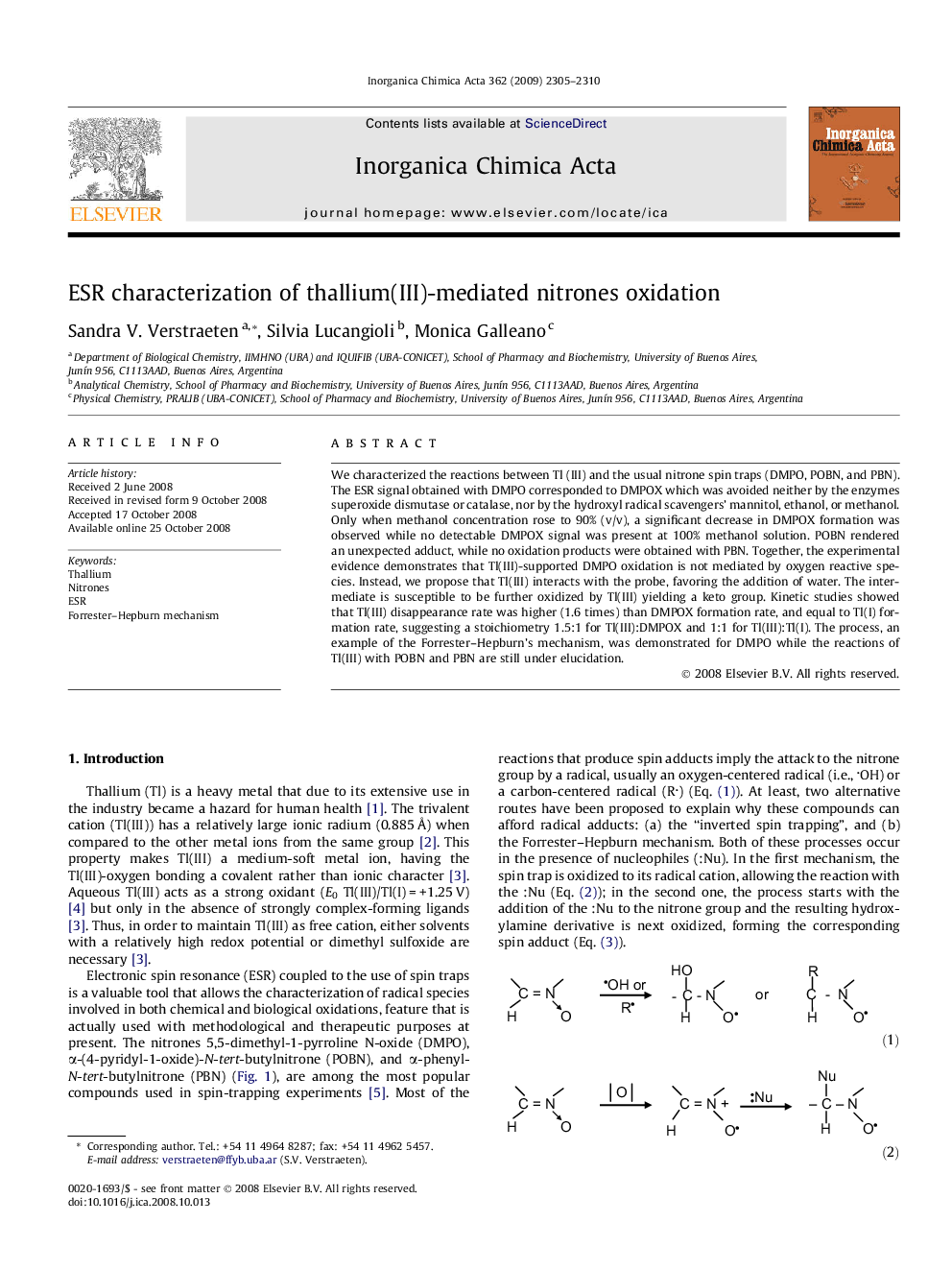| Article ID | Journal | Published Year | Pages | File Type |
|---|---|---|---|---|
| 1309856 | Inorganica Chimica Acta | 2009 | 6 Pages |
We characterized the reactions between Tl (III) and the usual nitrone spin traps (DMPO, POBN, and PBN). The ESR signal obtained with DMPO corresponded to DMPOX which was avoided neither by the enzymes superoxide dismutase or catalase, nor by the hydroxyl radical scavengers’ mannitol, ethanol, or methanol. Only when methanol concentration rose to 90% (v/v), a significant decrease in DMPOX formation was observed while no detectable DMPOX signal was present at 100% methanol solution. POBN rendered an unexpected adduct, while no oxidation products were obtained with PBN. Together, the experimental evidence demonstrates that Tl(III)-supported DMPO oxidation is not mediated by oxygen reactive species. Instead, we propose that Tl(III) interacts with the probe, favoring the addition of water. The intermediate is susceptible to be further oxidized by Tl(III) yielding a keto group. Kinetic studies showed that Tl(III) disappearance rate was higher (1.6 times) than DMPOX formation rate, and equal to Tl(I) formation rate, suggesting a stoichiometry 1.5:1 for Tl(III):DMPOX and 1:1 for Tl(III):Tl(I). The process, an example of the Forrester–Hepburn’s mechanism, was demonstrated for DMPO while the reactions of Tl(III) with POBN and PBN are still under elucidation.
Graphical abstractIn aqueous solution, Tl(III) oxidized DMPO, a nitrone compound used as spin trap. This oxidation occurred through a free-radical-independent process. We propose that Tl(III) facilitated the water nucleophilic attack to the 2-position of DMPO ring through a Forrester–Hepburn mechanism to produce DMPO-OH, followed by a two-electron oxidation rendering DMPOX and Tl(I).Figure optionsDownload full-size imageDownload as PowerPoint slide
